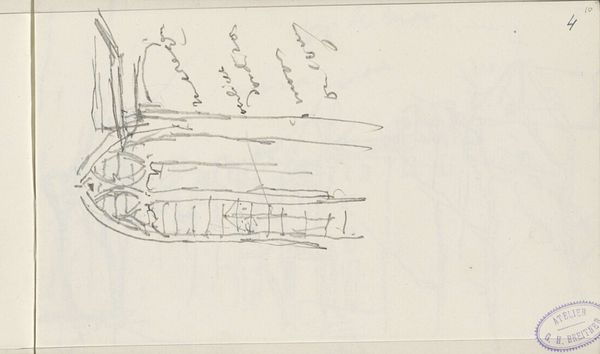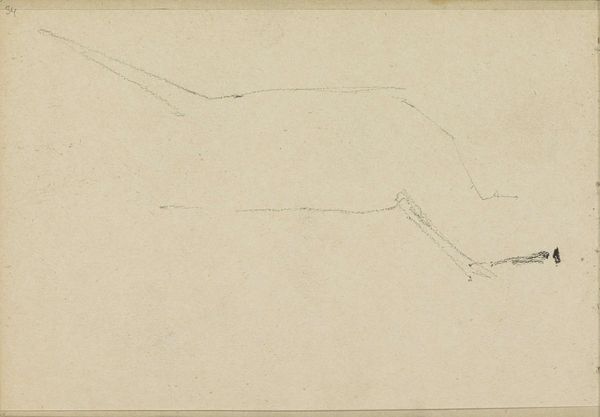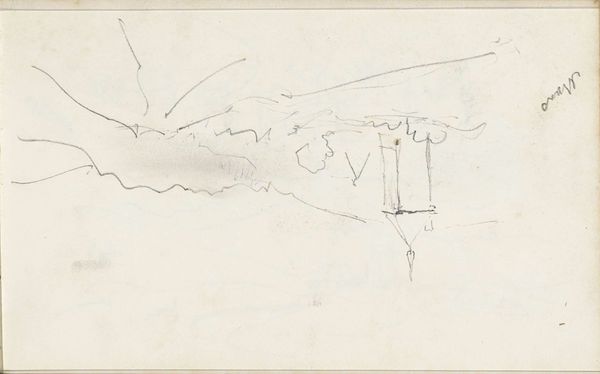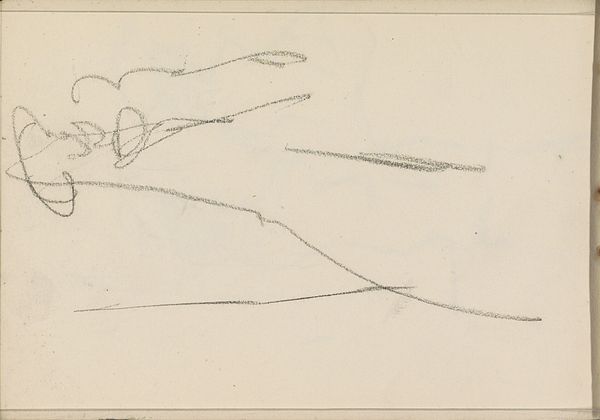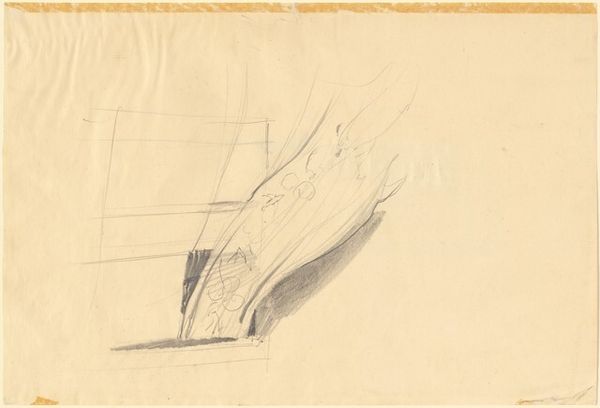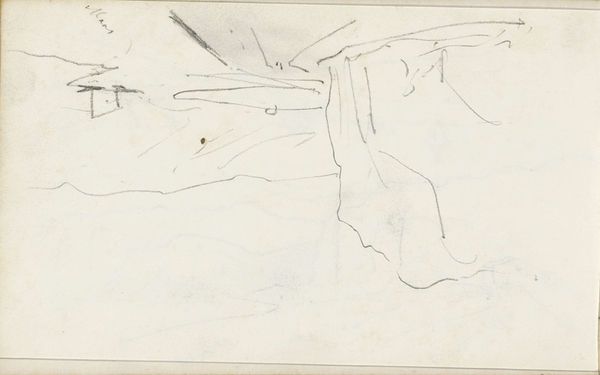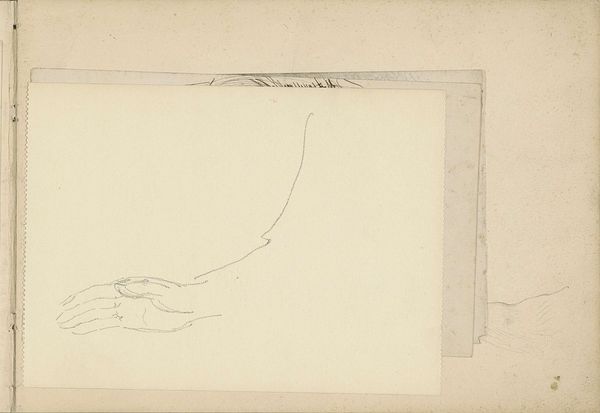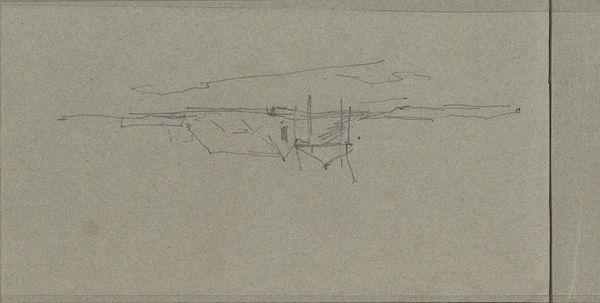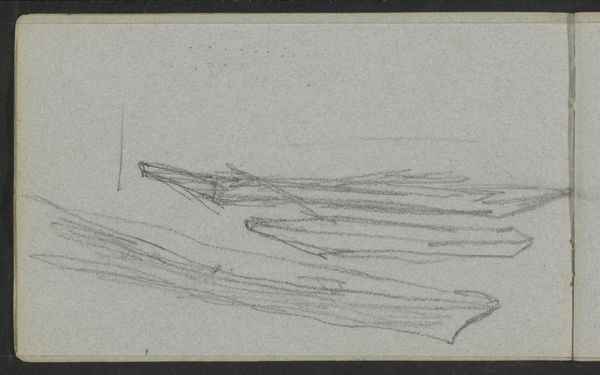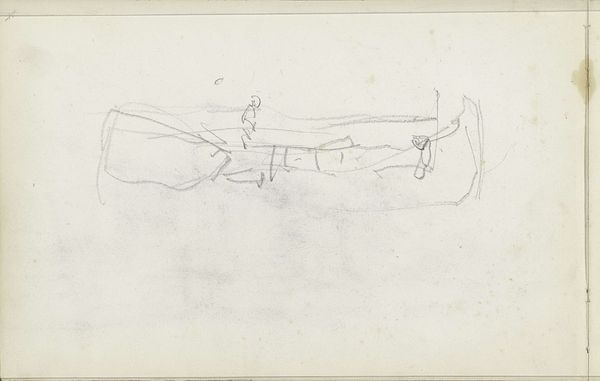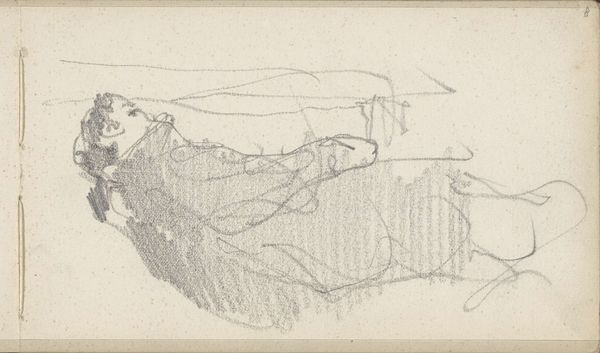
drawing, pencil, graphite, architecture
#
drawing
#
amateur sketch
#
aged paper
#
light pencil work
#
pencil sketch
#
sketched
#
incomplete sketchy
#
hand drawn type
#
form
#
personal sketchbook
#
pencil
#
line
#
graphite
#
sketchbook drawing
#
pencil work
#
architecture
#
realism
Copyright: Rijks Museum: Open Domain
Editor: This is Isaac Gosschalk's "Houten gewelf," or "Wooden Vault," created between 1860 and 1861. It's a pencil drawing, and it has a really light, almost fleeting quality. I'm struck by its incompleteness – it feels like a captured moment, an architectural idea still taking shape. What do you see in it? Curator: I love that feeling of something "taking shape." It’s more than just a depiction; it’s the very act of envisioning caught on paper. The loose lines, the tentative strokes… they speak to the creative process itself. To me, it echoes those Renaissance sketches where artists were grappling with form and perspective, thinking aloud with their pencils. You almost feel like you’re peeking into Gosschalk's mind, right? Do you see how he’s focusing on the structural elements, the way the arch meets the support? Editor: I do, and the numbers scrawled in the middle. It makes it feel technical and artistic at the same time. Curator: Exactly! It's where precision meets the ethereal, don’t you think? He’s clearly interested in both the engineering and the aesthetics of the vault. Maybe he was dreaming up some grand design, or simply captivated by the play of light and shadow across its surface. The beauty in these drawings often lies in their intimacy, wouldn't you agree? We glimpse the artist unfiltered. Editor: That's true; seeing the underpinnings somehow makes it feel more profound than a polished final piece. Curator: And perhaps reminds us that art, like architecture, is always a process of building, of shaping, of revealing something new, wouldn't you say? Editor: It definitely puts a fresh perspective on the finished buildings around us; each one started like this!
Comments
No comments
Be the first to comment and join the conversation on the ultimate creative platform.
